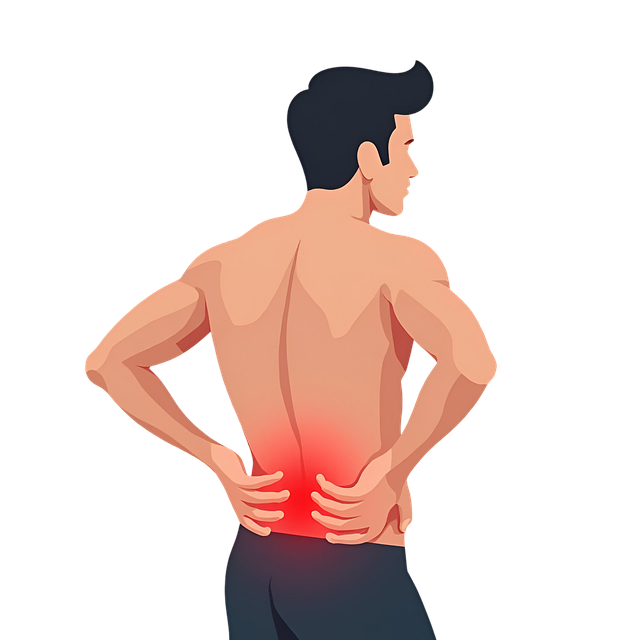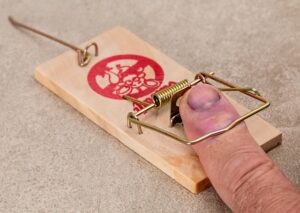Chronic pain, affecting millions globally, is a complex condition causing long-term discomfort. This ancient Chinese tradition, chronic pain acupuncture, offers non-addictive relief for various types of pain, including back, neck, and joint pain. By inserting thin needles into specific points, acupuncturists target inflammation and stimulate healing, providing an effective alternative to opioids. With minimal side effects and low risk, it's a safe option for drug-free chronic pain management. Find a qualified acupuncturist near you to explore this holistic approach.
Tired of chasing relief from chronic pain with medications? Explore the ancient practice of acupuncture as a drug-free alternative. This holistic approach has gained modern prominence, offering effective treatment for back pain, neck pain, and more. Understanding chronic pain and how acupuncture works on a physiological level unveils its remarkable benefits. Discover how this safe and non-invasive technique can target specific conditions, provide lasting relief, and help you reclaim your quality of life without relying on pharmaceuticals.
- Understanding Chronic Pain and Its Impact
- Acupuncture: An Ancient Practice for Modern Times
- How Acupuncture Works to Alleviate Pain
- Benefits of Acupuncture for Specific Conditions
- Safety, Side Effects, and What to Expect
- Finding a Qualified Acupuncturist Near You
Understanding Chronic Pain and Its Impact

Chronic pain is a complex condition that affects millions worldwide and can significantly impact an individual’s quality of life. It is defined as persistent pain that lasts for months or even years, often stemming from various sources such as injuries, illnesses, or underlying conditions. Unlike acute pain, which serves as a warning signal to the body, chronic pain continues long after the initial injury has healed, leading to persistent discomfort and potential physical and emotional strain. This condition can manifest in numerous ways, including back pain, neck pain, migraines, and sciatica, affecting movement, sleep patterns, and overall well-being.
The impact of chronic pain is profound, often resulting in reduced mobility, difficulty performing daily tasks, and even depression or anxiety. It can disrupt routines and limit one’s ability to engage in activities they once enjoyed. The search for effective relief has led many individuals to explore alternative treatments, with acupuncture emerging as a popular choice. Non-opioid pain relief methods are increasingly sought after, making chronic pain acupuncture a game-changer in managing this pervasive condition without relying on addictive medications.
Acupuncture: An Ancient Practice for Modern Times

Acupuncture has been practiced for thousands of years, with roots tracing back to ancient China. This traditional medicine involves inserting thin needles into specific points on the body, known as acupuncture points, to promote balance and restore natural healing mechanisms. Today, this holistic treatment approach is more popular than ever before, especially among individuals seeking drug-free pain relief alternatives for conditions like chronic pain, back pain, neck pain, joint pain, and even migraine headaches.
In modern times, chronic pain acupuncture has gained recognition as an effective inflammation treatment. By targeting specific areas, acupuncturists can alleviate pain associated with various ailments, including arthritis, fibromyalgia, and sports injuries. The practice is not just limited to physical symptoms; it also addresses the mind-body connection, making it a promising joint pain therapy for those looking to reduce stress and anxiety alongside their pain. This ancient practice has indeed found its place in contemporary healthcare, offering a safe and natural way to manage various types of pain without relying on medications.
How Acupuncture Works to Alleviate Pain

Acupuncture is a traditional Chinese medicine practice that has gained significant popularity as a drug-free approach to managing chronic pain. It involves inserting thin needles into specific points on the body, known as acupuncture points, which are believed to stimulate the body’s natural healing mechanisms and restore balance. This therapy targets not only the affected area but also the underlying causes of pain.
When it comes to alleviating pain, acupuncture works by influencing the nervous system, releasing endorphins (the body’s natural painkillers), and reducing inflammation. For individuals suffering from conditions like back pain, neck pain, sciatica, or joint pain, this therapy offers a gentle and effective alternative to medications. As an added benefit, non-opioid pain relief through acupuncture can help patients wean off addictive prescription drugs, providing a healthier long-term solution for chronic pain management.
Benefits of Acupuncture for Specific Conditions

Acupuncture has gained recognition as an effective approach to managing various types of pain, offering a natural and drug-free alternative for those seeking relief from chronic conditions. For individuals dealing with back pain, neck stiffness, and related issues, this ancient practice can provide significant benefits. Scientific research has backed the positive effects of acupuncture, especially in cases of sciatica acupuncture, where it reduces pain and improves mobility. By stimulating specific points on the body, acupuncture helps to restore balance and promote self-healing, addressing both the symptoms and underlying causes of pain.
Beyond back and neck pain, acupuncture is also renowned for its migraine acupuncture capabilities, offering a non-pharmacological solution for migraine sufferers. The precise placement of needles can help alleviate headaches and reduce inflammation treatment, providing much-needed relief. Moreover, chronic pain acupuncture has shown promise in treating a range of conditions, from arthritis to fibromyalgia, by regulating the body’s response to pain signals and reducing overall discomfort.
Safety, Side Effects, and What to Expect

Acupuncture for chronic pain relief has gained significant attention as a safe and effective alternative to opioids for managing various conditions. When practiced by a qualified professional, it’s considered low-risk with minimal side effects. Common adverse reactions are mild and may include temporary bruising or soreness at the needle insertion sites. Unlike medications, acupuncture does not carry the risk of addiction or negative impacts on vital organs, making it an appealing option for those seeking non-opioid pain relief.
During a typical session, you can expect to lie down comfortably while the acupuncturist inserts thin needles at specific points on your body. The sensation is often described as a dull ache or pressure. The treatment aims to stimulate your body’s natural healing response and balance energy flow, effectively addressing inflammation and joint pain. As a therapy focused on the root cause of pain, acupuncture offers a holistic approach to managing chronic conditions, providing relief without the side effects associated with many conventional treatments.
Finding a Qualified Acupuncturist Near You

Finding a qualified acupuncturist near you is an essential step in exploring drug-free pain relief options for conditions like chronic back or neck pain. Start by checking with local health clinics, hospitals, and wellness centers to see if they offer acupuncture services. Many reputable professionals are now part of these healthcare facilities, ensuring safe and effective treatments. Online directories and search engines can also help; simply type in “acupuncturists near me” along with specific pain points like “chronic pain acupuncture” or “neck pain relief acupuncture.” This will yield a list of practitioners in your area, allowing you to read reviews and compare qualifications before making an appointment.
Remember that finding the right acupuncturist involves more than location; expertise in treating specific conditions such as inflammation, migraine headaches, and chronic pain is crucial. Look for certified practitioners who have experience dealing with your particular needs, ensuring a personalized approach to non-opioid pain relief.
